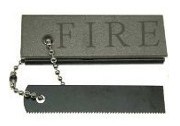|
|
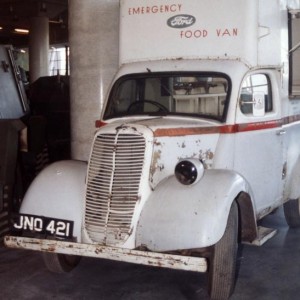 by Stacey Thompson by Stacey Thompson
Typhoons, earthquakes, floods, and a host of man-made disasters are a regular thing nowadays. Our lack of empathy for the environment, as well as each other, has facilitated an increasingly dangerous world for us.
In many of these situations, there really is no recourse but to evacuate from the affected area. For those who are fortunate enough to have their own home, and have enough space in their garage or yard to accommodate another vehicle, my suggestion is to have an emergency vehicle that is equipped to handle emergencies of various kinds.
This vehicle need not be expensive. A second-hand van or station wagon with the proper accessories and add-ons will more than do. A neighborhood association can pitch in to maintain and add the necessary upgrades to the van; services like American Van Equipment can provide the proper parts and installation at affordable rates.
Top Rack & Ladder
This is probably the most basic, and at the same time, the most useful feature you can (Read more....) […]
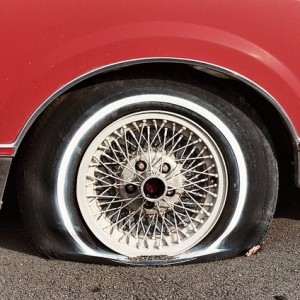 A little preemptive planning turns car trouble from your worst nightmare to a minor inconvenience. If your vehicle blows a tire, runs out of gas or loses a battery charge, don’t panic. There are simple steps you can take to keep your car alive, on the road and away from the curb. A little preemptive planning turns car trouble from your worst nightmare to a minor inconvenience. If your vehicle blows a tire, runs out of gas or loses a battery charge, don’t panic. There are simple steps you can take to keep your car alive, on the road and away from the curb.
Roadside Assistance
If your car is new or you purchased an extended warranty or service plan, it probably included some type of roadside assistance. That typically consists of services like towing, battery and tire replacements, lockout assistance and so on. If your car is older or out of warranty, there are a few places you can still sign up for service. Most insurance companies offer it as an add-on to your coverage, but make sure you know exactly what you’re paying for since each company varies in offering.
Another option is a company like AAA. For $55 per year, they offer the same services and partner with different service centers across the country, making costs a bit lower if you need to have work done once you’re towed there. If you prefer your new wheels to come from other retailers such as Continental tires, AAA will still (Read more....) […]
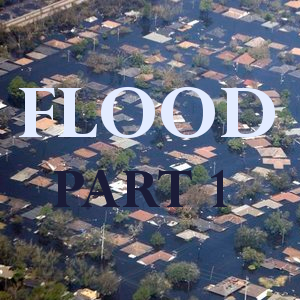 by Stacey Thompson by Stacey Thompson
Even if you’re not the most informed person around, it is very hard to avoid the news (and more unfortunately, experience) regarding the prevalence of floods all over the world. This is allegedly part and parcel of global warming, in which the higher global temperatures are affecting even the polar ice caps and our weather patterns.
I am not here to argue the causes and the solutions to this alarming environmental trend of global warming, but I do wish to share something about flood preparedness. If you happen to be living just a few kilometers away from a body of water, you should be very concerned about this. Even if you aren’t close to a body of water, strong precipitous weather patterns can also cause flooding just about anywhere on the Earth.
Vigilance against natural disasters and manmade threats are usually pegged as the domain of the “preppers” and survivalists, but I am telling you that everybody should be prepared for these unexpected disasters and emergencies. Focusing back on the flood scenario, I have noted a few important preparatory procedures (Read more....) […]
 by Stacey Thompson by Stacey Thompson
You haven’t really owned a car until you’ve replaced a flat tire. In my over a decade-long ownership of two automobiles (an Altis was my first car, and now I have a Prius), I’ve probably encountered flat tire problems around eight times (I have the worst luck with sharp metal objects on the roads), and out of all those occasions, I had to do the entire procedure (unassisted) thrice.
I may not be your regular greasemonkey or automotive enthusiast, but those experiences did teach me a thing or two about how to get through this irritating but necessary ordeal with most of your sanity and humor intact. Along with wisdom from other more grizzled car owners, I found these handful of tips most useful concerning on-road flat tire changing:
Crappy Tools and Spares
Unless you got yourself an automobile model that’s worth six figures or more, you shouldn’t expect the extras like tools and spares to be anywhere near impressive. I (Read more....) […]
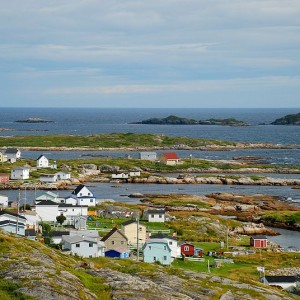 Authored By J Vanne. Authored By J Vanne.
The Maritime Provinces – Newfoundland, New Brunswick, Prince Edward Island and Nova Scotia
The maritime provinces – Newfoundland, Prince Edward Island, New Brunswick and Nova Scotia – are generally regarded as a region that has chronic unemployment , and in one sense, is almost “the land that time forgot,” in that much of the economic development that has gone on in Canada moved west for various reasons. However, where there are issues like this, there may be opportunity for you. This article will explore those possible opportunities.
Newfoundland
If you consider this province, first attend the Newfoundland 101 class: the province may be pronounced by an emphasis on either the first or last syllable – never the middle one. Newfoundland joined Canada only in 1949, after some brief toying with the possibility of joining the US. One key economic item is the Hibernia oil field off the coast, which is a plus for economic stability, but generally Newfoundland is a (Read more....) […]
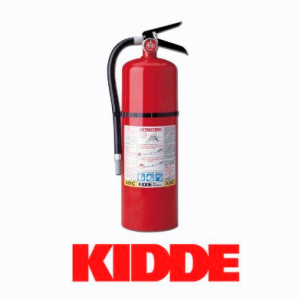 Homes are much safer now than they were decades ago, and yet fires continue to claim lives. Fires can happen in any home, but there are steps you can take to make your property safer. Here are a few precautions you should take to ensure that your home and family are as safe as possible. Homes are much safer now than they were decades ago, and yet fires continue to claim lives. Fires can happen in any home, but there are steps you can take to make your property safer. Here are a few precautions you should take to ensure that your home and family are as safe as possible.
Plan and Educate
You should know how family members can get out of different rooms in event of fire. Install special ladders in second-floor bedrooms, and take the time to teach the children about the fire plan. Every family member should know how to escape from different rooms, and they should practice it a few times to be prepared for an emergency. Have a designated meeting area outside of the house where everyone can gather after a fire.
Smoke Detectors – One isn’t Enough
One smoke detector on the mail floor is not enough. You should have a smoke detector on each floor of the home, and there should be one in the hallway outside of all bedrooms. Change the batteries when you set the clocks forward and back in the spring and fall, and test them occasionally (Read more....) […]
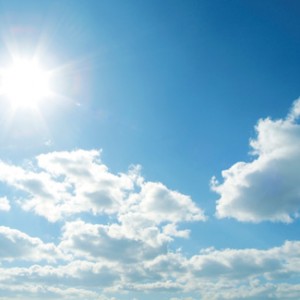 What Is Photosynthesis? What Is Photosynthesis?
Photosynthesis is a natural chemical and biological process that plants and some other types of organisms engage in to create energy that powers their growth and activity. While many people associate the act of photosynthesis with plants, it is also common to bacteria and algae. The process of generating energy through photosynthesis requires that an organism draw its energy from the sun and convert that energy into a fuel that it can use. Without this process, plants would not be able to grow. It is one of the most basic natural functions and it happens in a process that is fairly straightforward and easy to understand.
How Does Photosynthesis Work?
In order to understand the basic nature of photosynthesis, one must first understand that the sun is constantly producing a massive volume of electromagnetic energy. Although much of this energy does not actually penetrate the atmosphere, that which does is necessary for the survival of the organisms of this planet from the complex to the single celled, both flora and fauna.
Photosynthesis happens when a plant absorbs wavelengths of light from the sun. The (Read more....) […]
|
|
















